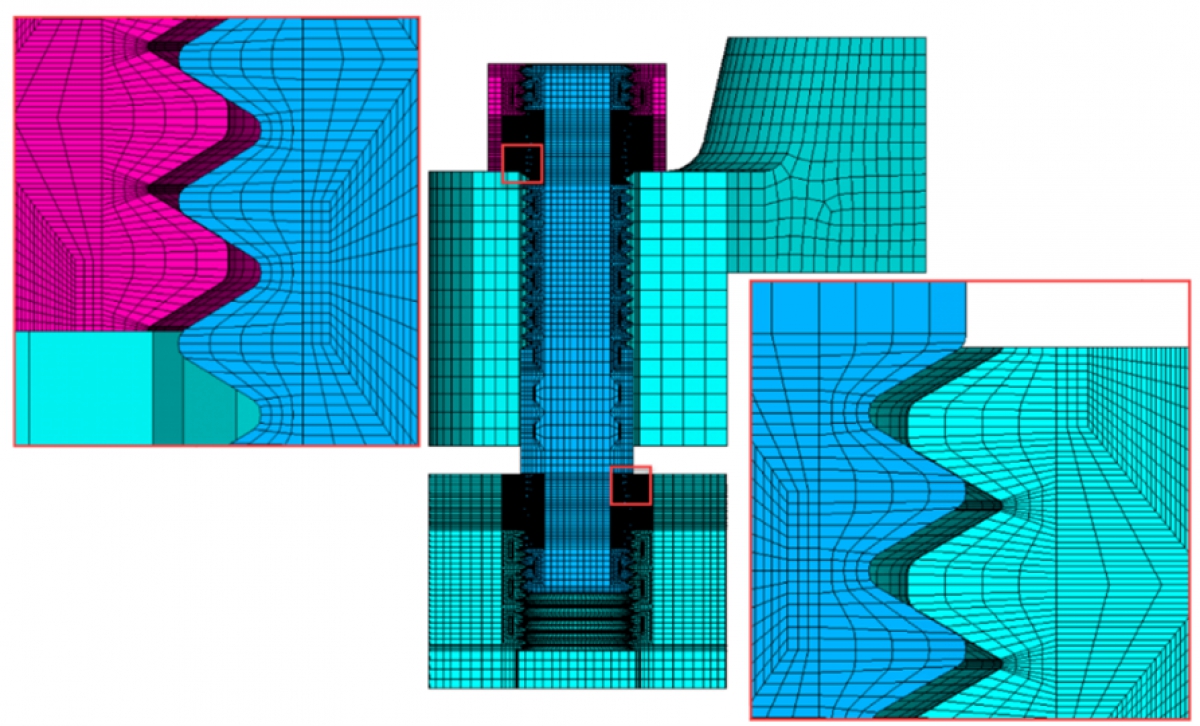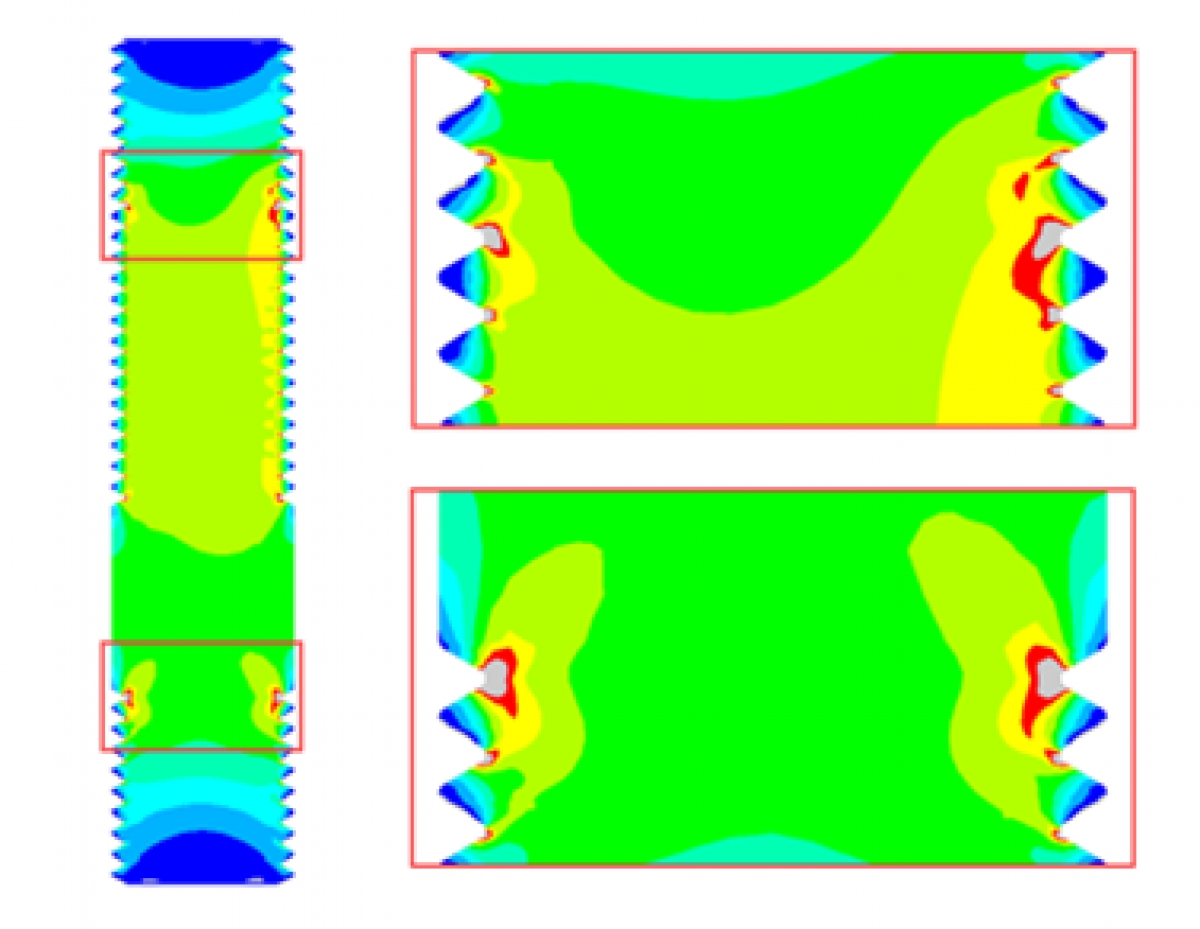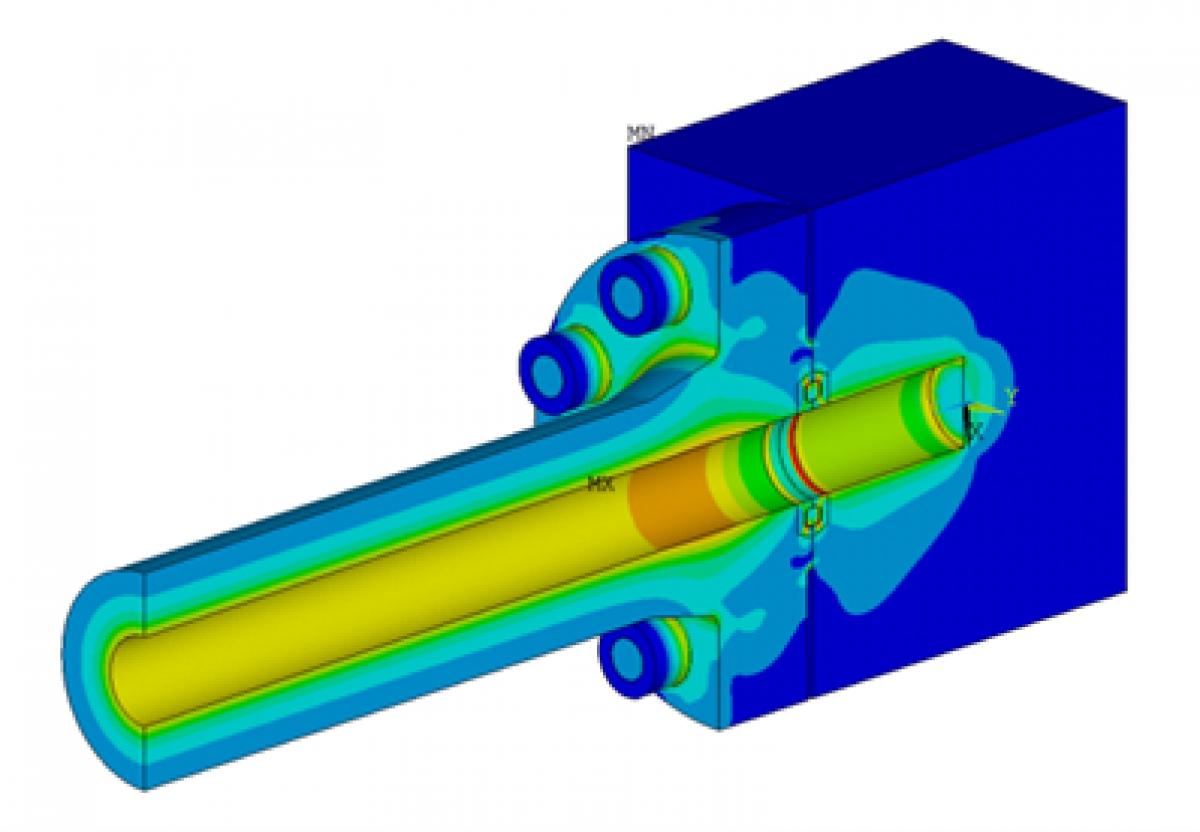Fracture Mechanics Finds Safe Cycles for Subsea Flange

Submodel of bolted connection used for fracture mechanics

Stress distribution through the bolt used for fracture mechanics

Stress distribution under Hydrostatic test pressure

Scan the QR code to visit the PDL valves webpages
PDL Engineering Group has a wealth of experience in applying advanced engineering software to solve the challenging technical problems of valve and actuator clients. Their analysts are world leaders in High-Pressure, High-Temperature (HPHT) assessments and have developed several in-house postprocessing and calculation tools which improve the efficiency of obtaining results by allowing more thorough assessments whilst reducing timescales and costs.
Recently a client needed multiple complex assessments to be performed on three subsea flange designs which were designed to operate under two different extreme operational conditions. The flanges were to be installed in two oil fields with requirements including pressures and temperatures of up to 20ksi and 400°F.
Starting with an analysis plan, the PDL team summarised the bounding load cases and identified other critical parameters, material properties, the assessment code, software of choice and post-processing requirements. The analysis model contained a flange, mating block, gasket and internal cladding, with modelled studs and nuts.
Half-symmetry FEA models were created, using the ANSYS Parametric Design Language (APDL) for ANSYS Mechanical, to represent the multiple loading scenarios required for the assessment. A Pressure-Bending-Tension (PBT) capacity chart was produced, considering both structural and serviceability limit criteria.
The flange design was then validated in accordance with API 17TR8 and ASME VIII Div. 3 for design conditions. This considered the protection against global plastic collapse, local failure, hydrostatic pressure tests and ratcheting.
Linear Elastic Fracture Mechanics (LEFM) assessments were performed on the components to examine the highly-stressed regions and to predict how a crack would grow (initiation site, direction and growth rate) based on the design code recommendations. For efficiency, the team developed an in-house screening method to quickly identify the critical paths for crack growth using APDL to identify the peak stress locations in each component and performed fracture mechanics (FM) assessments in accordance with API 579-1 / ASME FFS-1 on multiple paths from these points.
The fracture mechanics assessments required the individual threads to be represented, therefore a sub-model was generated with a refined mesh, to accurately capture the stress distribution around the thread root. This stress profile dictated the crack growth rate and direction of propagation.
The meticulous analysis provided confidence in the compliance of the flange designs for through-life operation and significantly reduced both the timescales and costs for the client.
To find out more about the PDL team’s proven track record with clients who rely on them to validate, understand, test and optimise their valves and actuators visit www.pdl-group.com/valves
|
Tel No: |
00 44 1434 609473 |
|
Email: |
solutions@pdl-group.com |
|
Website: |
|
|
LinkedIn: |
https://www.linkedin.com/company/pdl-solutions-europe-ltd/ |

| Telephone: | 00 44 1434 609473 |
| Email: | solutions@pdl-group.com |
| Website: | www.pdl-group.com |
| More information on the PDL Solutions (Europe) Ltd BVAA Member Directory Page |
Search related valve / actuator articles: PDL Solutions (Europe) LtdIssue 81CFD & FEA












